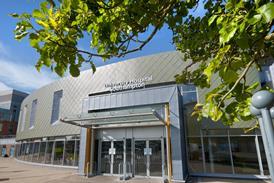The must-read stories and debate in health policy and leadership.
Bigger trusts swallow smaller ones all the time. Sometimes it seems to work, other times not.
The proposed merger between the Royal Free London Foundation Trust and North Middlesex University Hospital Trust has a storied history, with a previous attempt at a takeover rebuffed, accompanied by a report that said there was no evidence of any benefit and a chance that NMUH would lose services, “local accountability” and face disruption.
It’s not quite clear what has changed since then (apart from the leadership at both trusts, and the region).
The new proposals are at pains to stress that NMUH won’t lose the services it already has and that the population health of the patch will be a key priority.
The plans also emphasised that it might help with the “resilience” of some of the services at NMUH. This is code for “some of the specialisms there can’t be staffed properly, maybe we could organise some joint rotas?”
The trust has to outsource much of its radiology reporting because of difficulties recruiting enough staff, ditto dermatology.
It is 10 years since the Royal Free took over Barnet Hospital and Chase Farm hospitals that together comprised one of the most challenged trusts in the country.
A fair bit of investment went into making Chase Farm an elective-only hub and the loss of its accident and emergency department has seen NMUH’s A&E performance bump along at the bottom of the league tables ever since.
Has Barnet Hospital improved as a result of being absorbed into the Royal Free? There are mixed views and no counterfactual (perhaps it would have secured investment as an independent trust? Perhaps A&E performance would have stayed challenged as an independent trust?)
It doesn’t appear to have worked in the way the Chelsea and Westminster/West Middlesex merger has or the Frimley Park takeover of Heatherwood and Wexham Park.
Point of contention
NHS England is pushing for next year’s A&E performance target to increase by just 1 percentage point in a sticking point in the ongoing negotiations with the government, HSJ understands.
Senior sources have told HSJ that NHSE is pushing for next year’s “interim” four hours performance target to be set at 77 per cent.
That would be just 1 percentage point higher than this year’s threshold – 76 per cent. Last month HSJ reported that this year’s target has not been met nationally during any month of 2023-24 so far, with most acute trusts consistently falling well short of it.
But the government is pushing for the four hours threshold to be above 80 per cent – in what’s proving to be a key obstacle to the publication of the 2024-25 planning guidance, which has been overdue since December.
Some senior people at NHSE favour “incremental” increases in the four-hour target when A&E performance improves. But the Royal College of Emergency Medicine said the target rise would be “unambitious” and “pointless”.
Also on hsj.co.uk today
In The Download, Nick Carding talks to the NHS’s first national chief nursing information officer Natasha Phillips about the rise of the CNIO role, and in Comment, Louise Ansari says that with a record number of patients stuck in A&E, she wants to see a longer-term plan to improve conditions for which people wait for life-saving care.
























